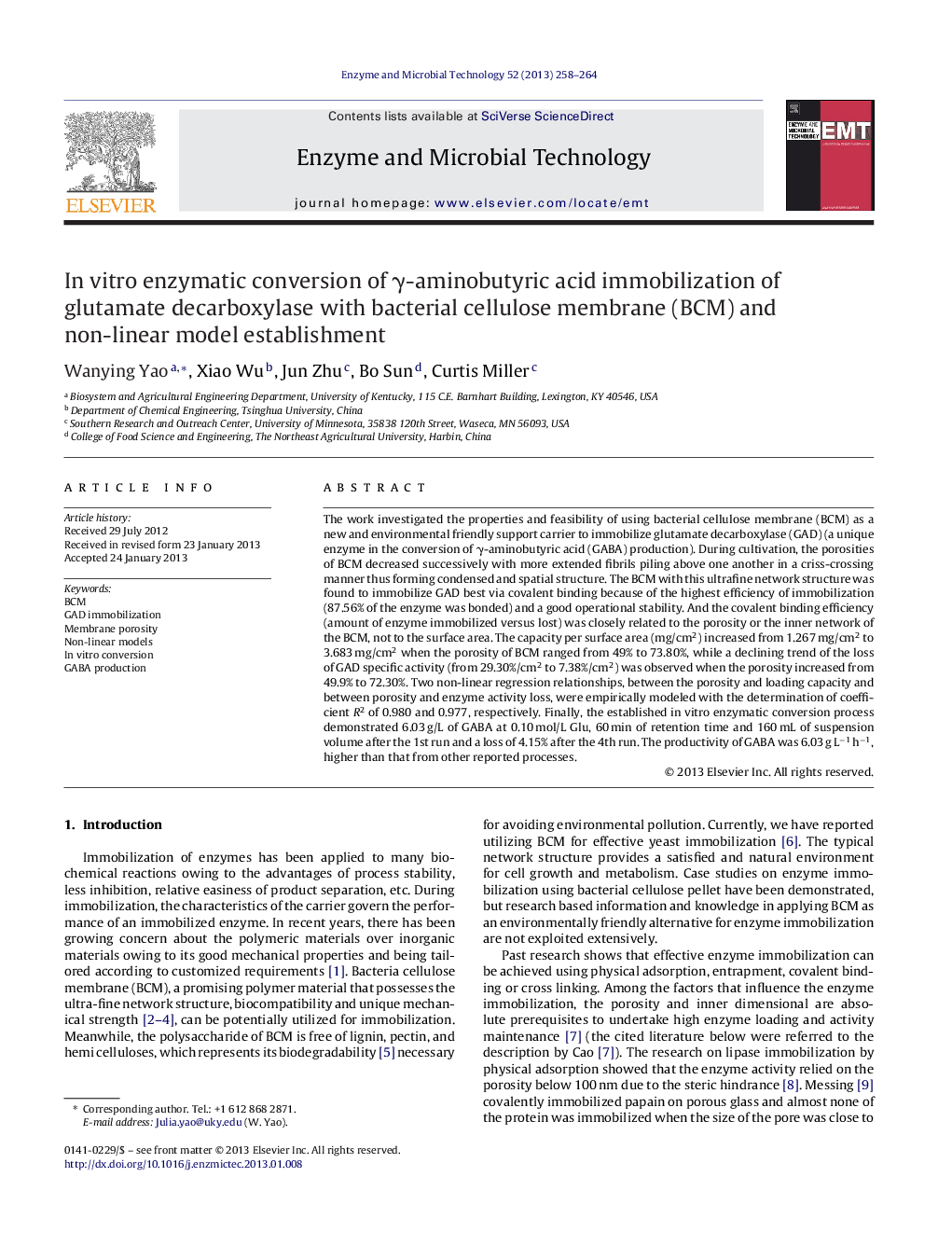| کد مقاله | کد نشریه | سال انتشار | مقاله انگلیسی | نسخه تمام متن |
|---|---|---|---|---|
| 17370 | 42663 | 2013 | 7 صفحه PDF | دانلود رایگان |

The work investigated the properties and feasibility of using bacterial cellulose membrane (BCM) as a new and environmental friendly support carrier to immobilize glutamate decarboxylase (GAD) (a unique enzyme in the conversion of γ-aminobutyric acid (GABA) production). During cultivation, the porosities of BCM decreased successively with more extended fibrils piling above one another in a criss-crossing manner thus forming condensed and spatial structure. The BCM with this ultrafine network structure was found to immobilize GAD best via covalent binding because of the highest efficiency of immobilization (87.56% of the enzyme was bonded) and a good operational stability. And the covalent binding efficiency (amount of enzyme immobilized versus lost) was closely related to the porosity or the inner network of the BCM, not to the surface area. The capacity per surface area (mg/cm2) increased from 1.267 mg/cm2 to 3.683 mg/cm2 when the porosity of BCM ranged from 49% to 73.80%, while a declining trend of the loss of GAD specific activity (from 29.30%/cm2 to 7.38%/cm2) was observed when the porosity increased from 49.9% to 72.30%. Two non-linear regression relationships, between the porosity and loading capacity and between porosity and enzyme activity loss, were empirically modeled with the determination of coefficient R2 of 0.980 and 0.977, respectively. Finally, the established in vitro enzymatic conversion process demonstrated 6.03 g/L of GABA at 0.10 mol/L Glu, 60 min of retention time and 160 mL of suspension volume after the 1st run and a loss of 4.15% after the 4th run. The productivity of GABA was 6.03 g L−1 h−1, higher than that from other reported processes.
► BCM was used to immobilize GAD which is the unique enzyme to produce GABA.
► Pre-activation followed by adsorption was favored.
► The covalent binding efficiency was related to the porosity not the surface area.
► Two models were established to describe and predict the immobilization performance.
► In vitro enzymatic conversion process showed high GABA productivity.
Journal: Enzyme and Microbial Technology - Volume 52, Issues 4–5, 10 April 2013, Pages 258–264